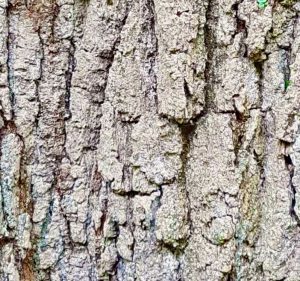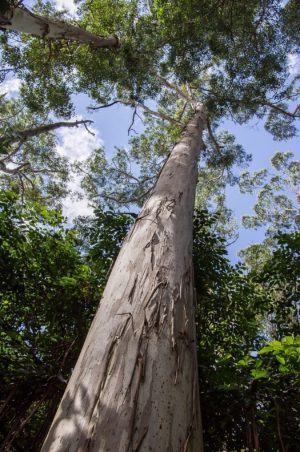‘Green chemistry’, tannins and leather

As society and industry have become increasingly aware of environmental damage, so there has been a growth in the search for sustainable practices, for example, switching from oil / coal based power generation to wind and solar power. Now various industrial processes are looking to use natural and sustainable materials that cause less environmental damage, by making use of ‘green chemistry’.
The leather industry (worldwide) make extensive use of chromium salts in the tanning process. The object of the tanning process is to change animal hide into a leather that is resistant to microbial attack. Chromium (III) sulphate is an effective and efficient tanning agent, forming compounds that interact with a protein (collagen) in the animal hide. However, certain chromium (VI) compounds are hazardous if released into the environment.
Whilst chrome tanning is faster than vegetable tanning and produces a stretchable leather suitable for handbags and garments, research and thought are now being given to the greater use of vegetable tannins, using plant waste material. Tannins are produced by many higher plants, indeed the bark of many trees, such as Oak, Chestnut, Acacia and Eucalyptus are rich sources of tannin. Tannins bind to  the collagen in the hide so it becomes more resistant to bacterial attack. In a living tree, tannins serve to defend the tree against microbial attack and to dissuade herbivores (from insects to mammals) from eating the plant material - because of their bitter taste.
the collagen in the hide so it becomes more resistant to bacterial attack. In a living tree, tannins serve to defend the tree against microbial attack and to dissuade herbivores (from insects to mammals) from eating the plant material - because of their bitter taste.
Recent work has shown that waste material (bark) from Acacia nilotica (the Gum Arabic tree) and Eucalyptus globulus (Blue Gum tree) is rich in tannins and can be used commercially for tanning in the leather industry, and is a relatively eco-friendly process. The process of reusing, recycling or composting waste materials and converting them into more useful products (materials, chemicals, fuels or sources of energy) is sometimes referred to as waste valorization. “Waste-to-energy” scenarios are becoming important as resources are depleted, and waste production and disposal are increasingly problematic
Comments are closed for this post.
